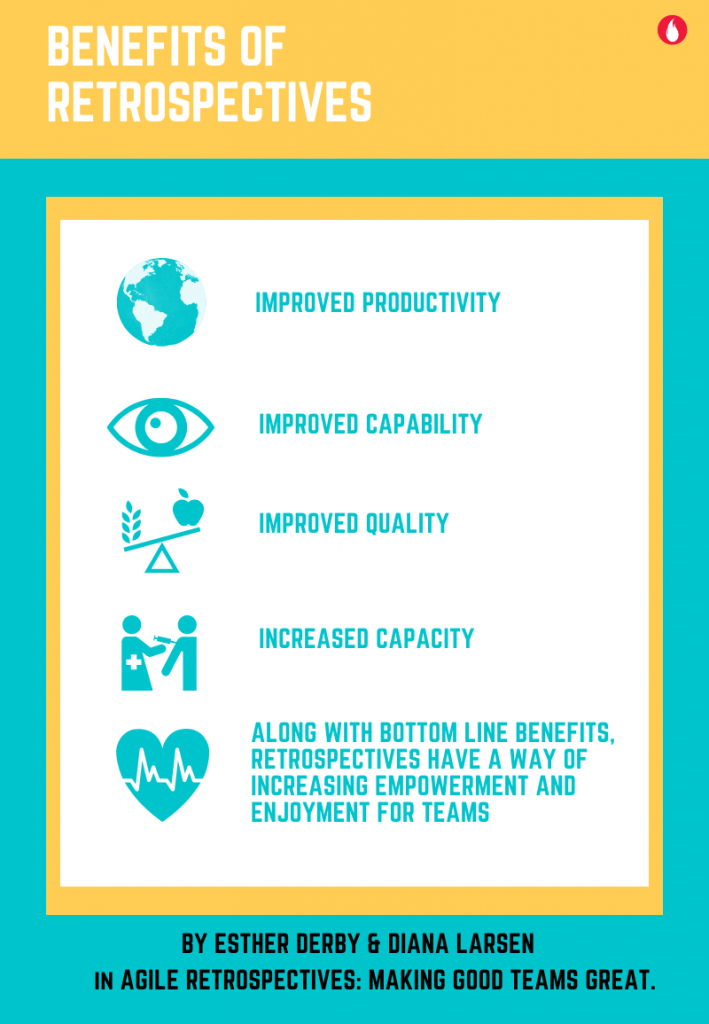
97% of companies surveyed in the 13th Annual state of agile report by VersionOne, claim to have adopted Agile . Agile is a mindset , a way of thinking and working. It is not merely a set of tools and processes. One of the key principles of an agile team is to reflect periodically on their actions, to improve and adapt. Perhaps as a way to encourage reflection in agile teams, retrospectives was introduced in them. It seem to have worked well as retrospective is almost a buzzword in Agile projects. There even is a World Retrospective day celebrated on the 26th of March every year. The intent of the celebration is to encourage reflection at work and in our daily lives. To put it simply – a retrospective is a forum which brings team members together and encourages them to reflect on their actions and outcomes.
Retrospective as a means of reflection in the workplace has gained traction in the last decade or so, because of Agile. Even before retrospectives, reflection at the workplace has been encouraged in many forms. We knew of them as post-mortems, after action review and more. Research has also confirmed the benefits of reflection at the workplace.
Research on reflection at workplace
Reflection is an important lever for learning, especially at the workplace. The most cited research on reflection at the work place is by Schon in 1983. Schon introduced the concept of “reflective practitioner”: ‘one who uses reflection as a tool to revisit experiences, both to learn from them and to frame murky, complex problems of professional practice‘.
Another research by Glaze in 2001 found that reflection can improve understanding of the context you work in. It can transform perspectives, deepen understanding and help you re-appreciate the job you do.
Importance of reflection in Agile
The Agile Manifesto was created in 2001, to improve the ways of working of teams. The creators indicated Reflection as an important principle for teams to follow. The process and tools for reflection are chosen by teams, based on their needs. Retrospective is today the most widely used reflection process in agile teams.
Definition of a Retrospective
Esther Derby and Diana Larsen authors of the book ‘Agile Retrospectives: Making good teams great‘ define an agile retrospective as follows. “An agile retrospective is a special meeting where the team gathers after completing an increment of work to inspect and adapt their methods and teamwork”.
Inspect and Adapt are two key words here. We will follow that up with a separate post. For now, let’s dive into, why should teams create their own retrospectives?
Why Retrospectives?
Retrospectives are an important reflection activity to consider for three reasons:
1) Establish a ritual of reflection.
Cognitively each of us know that we won’t grow from our experiences if we don’t understand them, learn from them and adapt ourselves. In short, reflect on our experiences.
Reflection is a natural activity for humans. Yet the busy pace and distractions of everyday life make it harder for us to pause to reflect. The sheer need to get more work done, robs us of our will to weave reflection into our days. And that’s why it´s so important to formalise this behaviour of reflection and make it a ritual. That is the precise thing that retrospectives accomplishes
2) Ensures that the reflection is not forced
Reflection is sub-optimal when ‘forced’. Researchers found that college students who are forced to participate in reflective activities often fake it in order to earn credit for the course but end up disliking reflection as an activity.
The Agile Retrospective is a ritual that belongs to the team. It is indeed a meeting, but it’s a meeting where the team has full ownership of the agenda and the outcome. Nobody dumps anything on them. This ensures that reflection is not forced on teams in retrospectives.
3) If you are not continuously improving, you are not Agile.
The mindset of being Agile calls for continuous improvement. Getting started with improvements and change is not hard. The challenge is in sustaining the improvements and becoming comfortable with constant change. A retrospective offers a place and framework to make continuous improvement a possibility. Every team periodically reflects on their actions and outcomes, always identifying things they will improve upon. Improvement for every single team that adopts it and thereby the organization is what a retrospectives makes possible.
Benefits of Retrospectives

How can you get started with reflection at the workplace?
Here are a collections of ideas and thoughts to consider:
1.A post by Kavi Arasu on reflection is a good starting point.
2. A few simple tips we carried in an earlier post might help too.
We hope these simple ideas will encourage you to incorporate reflection into the ways of working of your teams. We invite you to share any practices for reflection that you or your teams have used in the comments section or on our social handles @flyntrok.







